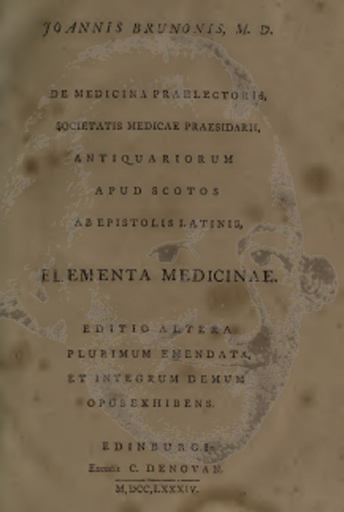John Brown1736–1788
Brown’s origins in Berwickshire were humble, but he rose from them as a consequence of his proficiency at Latin. Moving to Edinburgh he made a living as a grinder – assisting medical students with cramming for their examinations. This resulted in an attraction to medicine, which he pursued at the university. He was greatly influenced by Cullen during his medical training at Edinburgh, although later the two had serious disagreements about medical philosophy and treatment. Brown’s approach, known as Brunonianism, divided diseases into two classes (sthenic and asthenic) according to the over- or under-stimulation of the nervous system. Treatment involved trying to restore the balance of stimulation or irritation. It was popular at the turn of the eighteenth and nineteenth centuries in some European countries (particularly Germany) but not in Britain. One sceptic said that the Brunonian system sacrificed more humans than those who perished in both the French Revolution and the Napoleonic wars. Brown’s system was described in his Elementa Medicinae, the title page of which carries his portrait. It had its adherents as well as its detractors: Erasmus Darwin referred to it as a work of great genius. Brown’s battles with members of the Edinburgh medical fraternity resulted in his departure for London in 1786, where he promoted his principles and descended again into debt and dissolution. It was said of him that he was “the only great drinker, who ever exulted in that degrading vice, as justified by philosophical principles. So far from concealing his practices, he used to keep a bottle of whiskey, and another of laudanum, upon the table before him; and throughout the course of the lecture, he seldom took fewer than three or four doses from each.” His preferred personal sources of stimulation were to prove the death of him.
